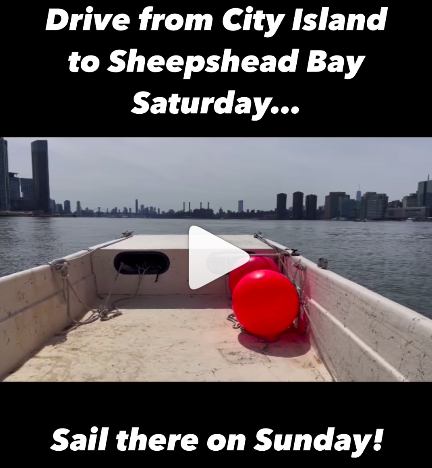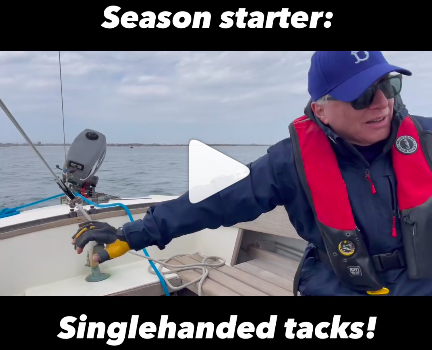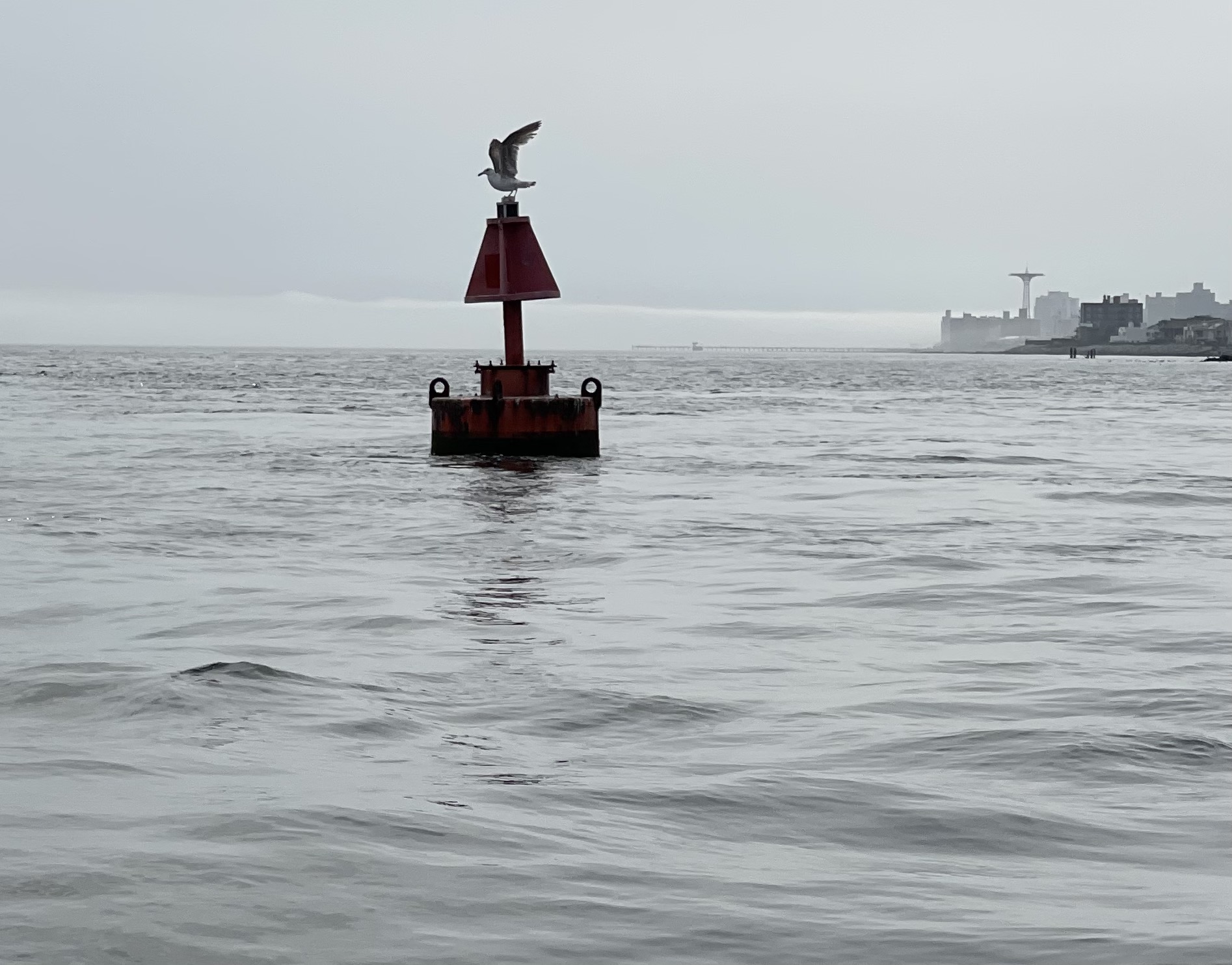Our season for teaching people how to sail a boat, or get better at it, is underway.
Actually, it began on April 4, one of our earlier outings! We started off conservatively with a private lesson for an experienced student who has a new boat arriving soon. He’s been a regular private lesson client for awhile, and has come down to our new location in Sheepshead Bay a few times now despite plans to keep his boat on the Sound.
Due to the vagaries of spring weather, as exacerbated by global warming and climate change, we stopped our long standing tradition of kicking off learn to sail courses in mid April. Now, it’s early May, with an occasional advanced course starting earlier as well as private lessons.
Next up after that lesson: I brought our Carolina Skiff down from City Island. I ran it down the East River, which is not necessarily for the faint of heart, and then NY Harbor (even less so) before getting through the Verrazzano Narrows and on to Rockaway Inlet and Sheepshead Bay. I knew I needed to not only time the current properly, but also the weather. Our skiff is very open, so spray can be an issue. It’s also more flat bottomed than deep-vee’d, so it has serious limits to how much of a pounding it can take in chop. That said, it’s super stable and can handle rolling/yawing extremely well.
I settled on a Sunday with a forecast for very light north winds, switching to light from the southwest late in the day. If all went well, I’d have a gentle wind at my back on the way down and no worse than a gentle one from on one side toward the end of the trip. The slack current at Hell Gate was predicted for exactly noon, and I love the ‘high noon’ thing. I assumed a 10-knot average speed, and based on the distance, figured it would take 2.5 hours non stop. Of course, I’d stop for various reasons a number of times, including potentially for a fuel top-off, so guesstimated 4 hours dock to dock.

It was a milk run. Sunny most of the way to take the edge off the chill; flat calm due to light winds. There were occasional wakes, but I barely reacted to most of them and none were dramatic. I almost skipped the fuel stop, but heeded the advice of one our instructors who’s and ASA Instructor Evaluator, and super knowledgeable and experienced in that area. “You’re right there – how long a detour is it? 30 minutes? Just do it.” He was speaking from both experience and common sense. Most very experienced boaters have, at some point, had a fuel fiasco.
It was around 30 minutes. I also did numerous very short stops for grabbing a bite to eat, adding clothes, doing something on the phone, or taking pics. Total time dock to dock? 3:08. So, my 2.5 was damn close to exactly right. Score one up for the great navigator! Turns out… I didn’t need the extra fuel, but better to have to add stabilizer to that than wonder if a tow boat service could do a fuel drop half way between Hell Gate and Schitts Creek.
Next? A quick sail with two instructor candidates. Chilly and wet – but fun! See a sample in the clip above.
We did another private lesson for a City Islander soon afterward. She booked weeks in advance and didn’t realize we had moved to Sheepshead Bay! But, she decided to make the trek anyway. Her sister and she had taken lessons together previously, and wanted a better progression at a pace that suited them. They tried, we supplied, and they had nearly perfect conditions that helped that happen. They’ll be back.
We also got out two students who had different backgrounds, but were both in need of a similar lesson. I grouped them and also brought along a new instructor we’re ‘onboarding’ for his second orientation session. We got becalmed just as we entered the Inlet, but then the wind picked up enough to fight the current. Soon, we didn’t need to consider the current.
Full courses begin on May 6, and our first Sailing Vacay Course of the year ends the day before down in the Virgin Islands (BVI). In the meantime, we’ll continue with privates as the weather allows. Spring weather up here is too volatile to plan on multi-day beginner courses for people with busy schedules. Some schools do it anyway and graduate people who haven’t learned to sail. We’ve paid attention to the weather trends and decided to start a little later, so students who Start SailingSM with us can get it done the first time.

